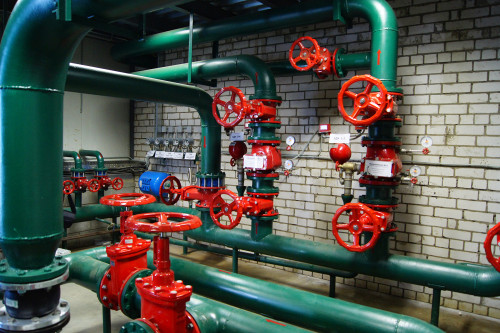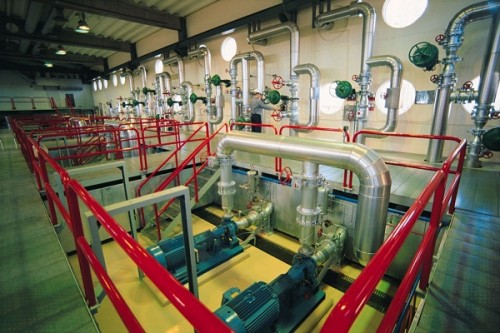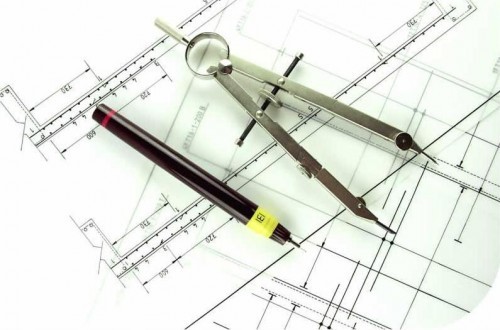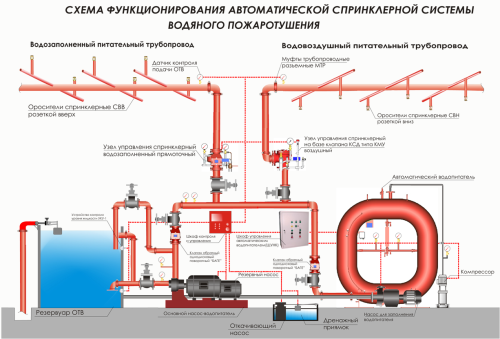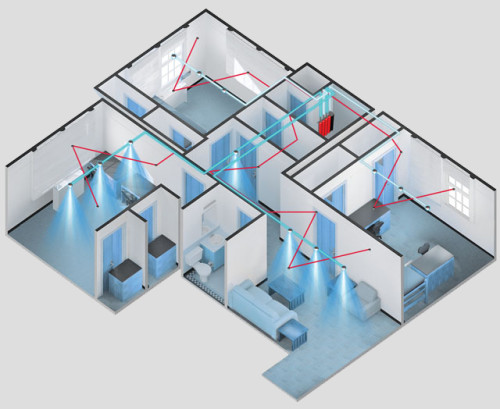
Designing fire extinguishing systems Useful advice
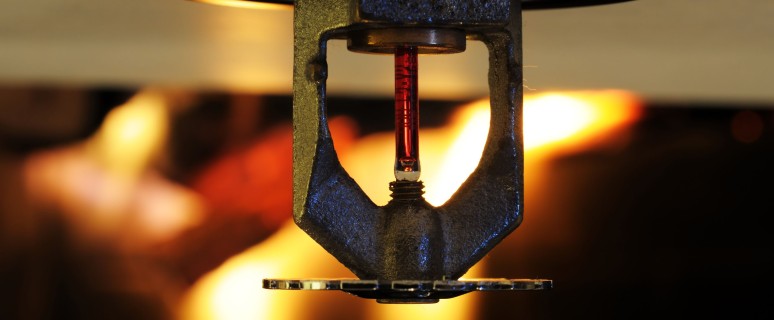
Fire extinguishing systems are for the safety of human life and health in a fire, to prevent the spread of fire in the room, to protect material and cultural values. This high-tech, modern system is designed to reveal the moment of fire, to notify people in the room using alarm signal and localize the fire by the release of special filling substances. And the requirements for the fire extinguishing system are high, as in particular, it is precisely from them that the safety of the vital activity of people under the threat of fire depends.
Content
The better the fire alarm is designed and mounted, the more effective it can prevent the threat to others, so in order to correctly install it, special skills and skills are needed.
New buildings Kaluga Offer a wide selection of apartments, after buying an apartment or home design and installation of fire extinguishing systems - this is one of the most reliable technical means of operational prevention of the focus of fire and its liquidation.
Fire extinguishing systems
Fire extinguishing systems that have currently gained great distribution are five types:
- Fire extinguishing systems with water.
- Foam fire extinguishing systems.
- Gas fire extinguishing systems.
- Fire extinguishing systems with powder mixtures.
- Fire extinguishing systems with aerosol substances.
Fire extinguishing systems water
Water fire extinguishing systems are the most common, as they are quite effective and cheap. Many prefer precisely such fire safety systems.
To eliminate the fire, water or water with chemical additives is used as a fire extinguishing agent. Water is fed on fire water pipeline directly to the fireplace. In this case, an alarm signal is fed to the fire safety console.
By type of rods, such systems are divided into sprinkler and dramet.
Sprinkler fire extinguishing systems
- Sprinkler is a fire extinguishing system consisting of individual rods (sprinklers) mounted in a pipeline where water is under pressure.
- When the room temperature rises to a certain level, the thermal sensor in the sprinkler is destroyed and the water begins to flow, as a result of which the pressure in the system falls and the control system triggers the pump.
- As a result, water applies to the ignition zone.
Drencher fire extinguishing systems
- Drakecratic is a fire extinguishing system, where special irrigation heads are used as working elements, called Drenthers.
- In the drainage system of extinguishing fire fire, the fire prevention mixture is supplied after the signal is received from the person or the system and the inclusion of pressure pumps.
- Here, water or foam is used as a fire extinguishing mixture, with which the veil can be created, which contributes to and extinguishing a fire, to prevent its distribution, as well as importantly, the holding of carcinogenic substances that are distinguished by burning.
Foam fire extinguishing systems
- Foam Fire Extinguishing Systems - Systems used to extinguish oil and combustible liquids, as foam is capable of spreading along their surface and overlapping oxygen access to fire.
- Foam is able to resist the wind, has good cooling properties, and that is why it contributes to effective fire extinguishing.
- The foam solution can be protein (consisting of hydrolysis protein), fluoroprotein (protein with fluorine additives), based on detergents (rapidly increases in size) and alcohol resistant (for extinguishing alcohols and fuel solutions).
Fire extinguishing systems Gas.
- Gas fire extinguishing systems are designed to supply fire extinguishing gas to the fire focus.
- Gas does not cause corrosion, the consequences of its use can be easily eliminated by simple repair of the room, neither cold, neither heat are terrible gas systems, they do not freeze and do not overheat.
- Gas used in fire extinguishing systems is safe for a person, and extinguishing the distribution to the entire room.
- Among the disadvantages of such systems can be noted low efficiency when extinguishing products that are able to burn without air and susceptible to self-burning and degeneration.
Fire extinguishing systems with powder mixtures
- In such systems, a fine powder composition is supplied to the ignition zone.
- The advantages of using powder fire extinguishing systems are: high stewing ability, wide use and relative low cost of powder.
- The powder makeup minimally affects the protected materials, it is non-toxic, as a result of which there is no direct threat to the lives of people when the fire system is triggered.
- It is necessary to take into account that the powder mixture is kept in the air for several minutes and can lead to a strong breathing.
- Also, the disadvantages of such systems include a surface method of extinguishing of fire and low penetrating ability, as well as the possibility of pollution of the premises.
- Powder fire extinguishing systems can be combined with other fire fittings.
Fire extinguishing systems with aerosol substances
- Systems of aerosol fire extinguishing are systems that use a special aerosol to extinguish fire.
- Such systems can be used over the years and do not have a detrimental effect on human health and clothing.
- Aerosols are cheap, and the installation of such fire-fighting systems does not require additional costs.
- The impact range of the aerosol fire extinguishing system applies to solid combustible materials, flammable substances and electrical insulating equipment.
Designing fire extinguishing systems
The design of fire extinguishing systems is a complex and time-consuming process that requires special knowledge and experience. To do everything correctly, it is necessary to carefully approach the preparation process to gain access to further work, namely to the installation.
When designing fire extinguishing systems, it is necessary to pay attention to such processes:
- Determine the type of task, design the fire extinguishing system depending on the type of room where it will be installed.
- Select the most suitable equipment for mounting the fire extinguishing system (gas, water, powder, foam, etc.) depending on the type of room.
- Determine the temperature mode, as much depends on it. For example, if the temperature in the building is higher than zero, it is possible to use foam, aqueous or thin anti-fire mixtures, and if the room temperature may drop below zero, the powder or gas method of fire extinguishing is suitable.
Calculation of fire extinguishing system
For the efficient and safe use of fire extinguishing systems, the fire extinguishing system is required and compliance with all safety standards installed by the manufacturer and the projector.
The design of the fire extinguishing system project includes a definition:
- necessary number of fire sensors;
- placement of mounted sensors;
- the volume of the fire extinguishing agent required to eliminate fire;
- the delay time between the signaling and the supply of the fire extinguishing agent;
- selection of optimal placement of the manual start and delay of the fire extinguishing system startup.
With incorrect calculations of all of the above indicators, the system may not only be ineffective, but also unsafe.
Installation of the sprinkler fire extinguishing system
Consider the phased installation of a sprinkler fire extinguishing system with water, as it is most common.
- Delivery, shipping and warehousing at the installation of equipment for installation, namely galvanized pipes.
- Installing pipes on clamps with rubber gasket. Employees stretch the thread on the ceiling smoothly, in accordance with the drawing. At a distance of 1.5 m. The clamps are attached from each other.
- Weling pipes, welding of taps and fittings for splinkers. Employees according to the drawing make the markup, where the fittings will be, and the welder in the protective mask cooks fittings, since the zinc oxide released during welding is harmful to health. Only after the end of the welding is cutting the carving for minking knots.
- The ceiling has the main pipeline fire extinguishing. For the installation of splinkers, part of the pipeline is displayed next to the air duct ventilation.
- In the supply of water, the pump is involved in this system of extinguishing fire, and the installation of the distribution unit is carried out in the basement. The fire extinguishing scheme of the system is drawn, where the location of the equipment on the hydraulic scheme is denoted in the project. We proceed to the installation of the frame. We set primarily the main equipment (centrifugal pump and electric motor) according to the location scheme. We establish a spare pump parallel to the main for more efficient and reliable operation of the fire extinguishing system.
- Install the gate with rubber seal. Such valves are capable of keeping water pressure up to 20 bar without leakage. When they are installed, you need to take into account the turning mechanism of the valve and before installing and welding the pipes to put the valve and virtually close open the handle.
- At the next stage, water tank is installed. It should be borne in mind that there is 8,000 liters of water for the operation of the fire extinguishing system for half an hour. The tank is filled through the pipeline with water from the fire hydrant.
- Installation of equipment is completed, and all additional work on painting and guidance of order are conducted during the test for the strength of the fire extinguishing system.
Design of automatic fire extinguishing systems
Automatic fire extinguishing systems are designed to prevent the spread of fire, its localization and elimination of rooms. And all this without human intervention. Such a type of system when the fire focus is detected automatically, including thermal, gas, optical-electronic and other bisteners, then the fire extinguishing mixture in the form of water, gas, aerosols, foam or powder, depending on the type of fire, is delivered to the fire dislocation location Automatic fire extinguishing systems.
After selecting a certain type of automatic fire extinguishing system, it is designed, installation, commissioning and service.
Project work goals:
- the possibility of consistent and consistent actions with an understanding of the final result of the project;
- exception of excessive cash costs;
- reduction of installation terms;
- prevent errors at the design stage of design and estimate documentation.
Automatic fire extinguishing systems are the most effective means of extinguishing fires and provide operational location of fire with minimal risk to human life and health. It must be remembered that when developing such systems and in their design, installation, testing and service, it is necessary to strictly follow all regulatory documents and safety techniques.




